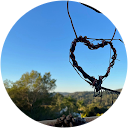Daily Archives: July 19, 2017
Tai Chi Push Hands: An Exercise for All Practitioners
In solo forms, tai chi is a way to understand one’s self. It’s a way to feel the internal flow of energy, as well as any internal tension. There is no opponent except whatever negative thoughts, heavy emotions, or internal demons arise.
Tai Chi Push Hands: External Forces. With push hands, one must deal with external forces in addition to whatever internal stress one carries. Rather than feeling simply the air, one has a direct experience of the force and energy from one’s practice partner.
A Training for Martial Arts. Push hands is a version of sparring in tai chi. It is the bridge to move from a fluid solo form to tai chi for martial arts. Two persons maintain arm contact while trying to unbalance and to push each other.
But, push hands is not a sumo match and it’s not about sheer mass or muscle power. There’s typically no hitting, kicking, although there’re some push hands styles where throws and joint-locks are all part of the game.
Push Hands for All Practitioners. It’s also possible to practice push hands in a non-threatening and cooperative way. This form of push hands is useful for all tai chi students, even those without an interest in the martial aspects of tai chi.
Push Hands for Relaxation. The key is to use relaxation, intent, awareness, sensitivity, and knowledge of the internal energies to push and to uproot your partner. It tests your ability to root and to remain relaxed and balanced, despite whatever forces are coming in from the external environment.
When confronted with an opponent or even a practice partner, it’s easy for emotions such as fear or anger to arise. Pushing to win can also take you away from a relaxed state. Focus to maintain a steady breath and a relaxed stance with good alignments.
When you’re tense or not well aligned, it will be easy for your partner to take your balance. This forces you to quickly recognize and to relax areas of tension—or you will find yourself easily off-balanced by your partner.
Circles in Push Hands. Like all of tai chi, push hands involves circles. Here, the hands circle back and forth between the two practitioners. One half of the circle defends, and the second half attacks.
Yield and Defend. For defending, the emphasis is on rooting or grounding, and deflecting or yielding to an attack. There is no attempt to directly oppose the force from your partner.
Attack. Immediately after yielding, counter and attack by using your partner’s force against him or her. If your partner has overextended and is tilting forward, you’ll find that only an ounce of force will be needed to send them off-balance.





